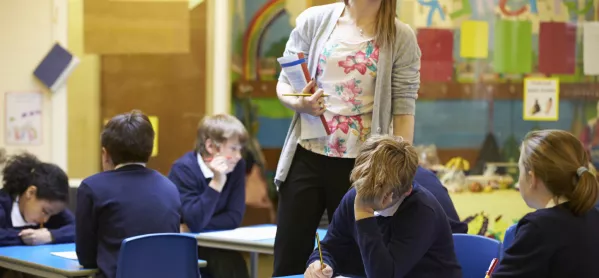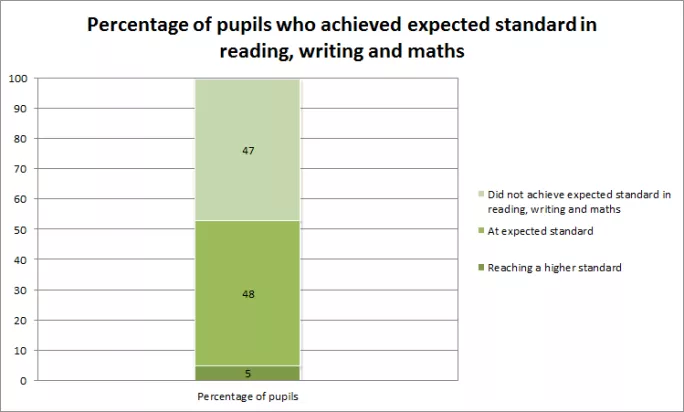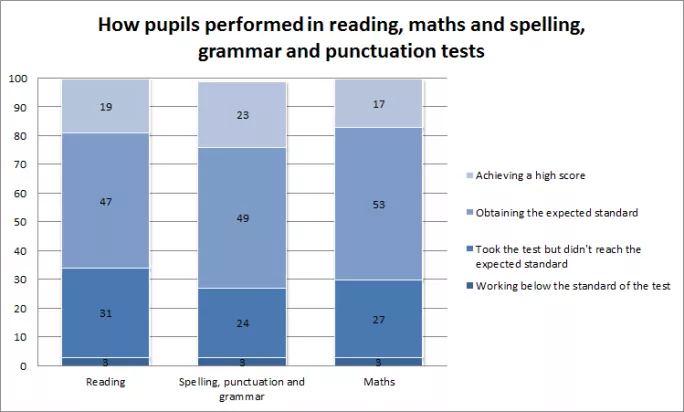More details on how 10- and 11-year-old pupils performed in the new tougher Sats were released by the Department for Education today.
The statistics show how scores vary between tests and teacher assessment, girls and boys and local authorities.
Further details, including the number of schools below the floor targets, are due to be published with the performance tables in December.
Here is what we learned from today’s figures:
1. The high standard is very high
Just 5 per cent of pupils reached the new high standard in all three of reading, writing and maths. This is defined as a scaled score of at least 110 in reading and maths, as well as being judged as “working at greater depth” in writing. The score of 110 is chosen so that approximately one-fifth of pupils will achieve a high score in each separate subject area.
Source: DfE, SFR 39/2016, 1 September 2016
2. Achieving a high standard is more likely in spelling, punctuation and grammar than in the other subjects
In spelling, punctuation and grammar (Spag), 23 per cent of pupils achieved a high score. In reading, 19 per cent of pupils achieved a high score, and in maths, 17 per cent of pupils did so. In writing, which is teacher-assessed, 15 per cent of pupils were working at greater depth.
Source: DfE: SFR 39/2016, 1 September 2016
3. Girls outperformed boys in most subjects - and the gap is larger than in previous years
Some 57 per cent of girls achieved the expected standard in reading, writing and maths, compared with 50 per cent of boys. But the gap, which is calculated from unrounded figures, is eight percentage points. In 2015, 83 per cent of girls achieved the expected level 4, compared with 77 per cent of boys - a gap of six percentage points.
4. The gap between test results and teacher assessments was much larger than in previous years
Teacher assessments are carried out in writing, reading, maths and science. Teachers assessed 74 per cent of pupils as reaching the expected standard in writing - where there is no test. In reading, teachers assessed 80 per cent of pupils at the expected standard, but only 66 per cent reached this standard on the test. In maths, 78 per cent of pupils were teacher-assessed to be at the expected standard, compared with 70 per cent who achieved this in the test. The gap is much larger than in previous years when the differences between tests and teacher assessments have been around 1 or 2 percentage points.
5. There is considerable variation between local authorities and the gap is biggest in reading
The smallest amount of variation between local authorities was in maths (the lowest proportion of pupils achieving the expected standard was 58 per cent, the highest was 83 per cent). The highest level of variation was in reading (the lowest proportion of pupils achieving the expected standard was 52 per cent, the highest was 81 per cent).
In 2015, there was most variation between local authorities in Spag (the lowest proportion of pupils achieving level 4 was 72 per cent, the highest was 92 per cent). There was least variation in writing (the lowest proportion of pupils achieving level 4 was 83 per cent, the highest was 94 per cent).
Want to keep up with the latest education news and opinion? Follow TES on Twitter and like TES on Facebook







